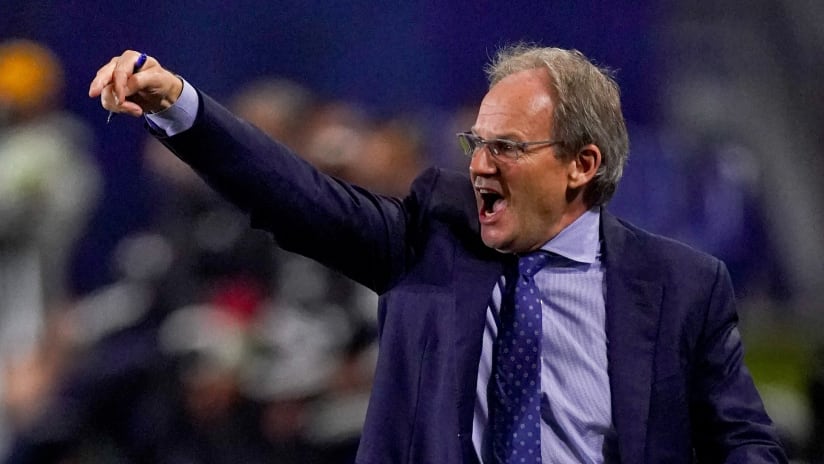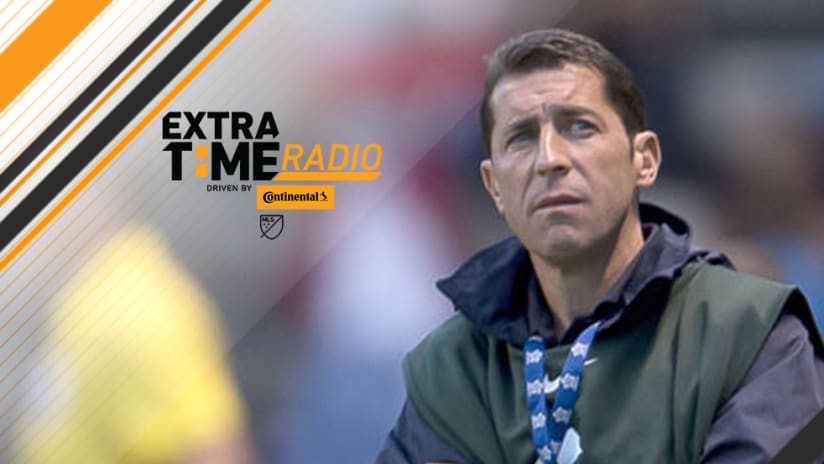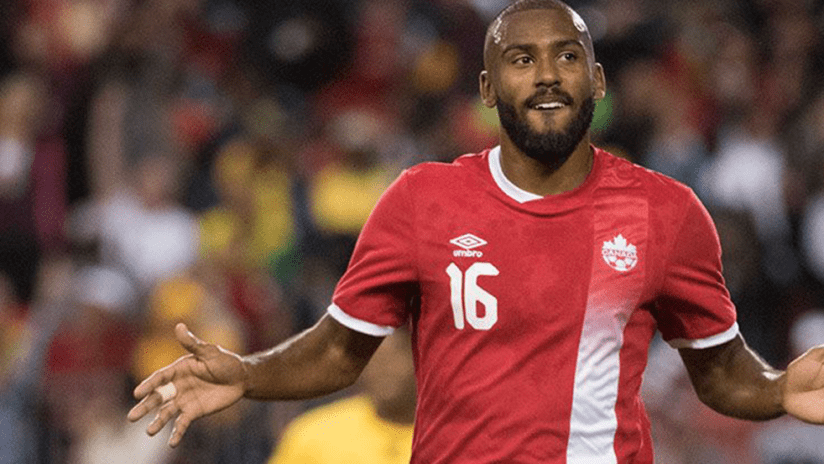Sigi Schmid has been in the business of soccer long enough to know the golden rule when it comes to young American players.
It’s a numbers game he learned a long time ago, while coaching at UCLA. During the 1980s and 1990s he built the Bruins into one of the premier college soccer programs in the country, and in decades spent recruiting and developing the nation’s most talented players he learned landing five top-level recruits on campus each fall wasn’t always something to celebrate.
The numbers told the story, time in and time out. Three of those players might turn out right. Maybe four, if things went his way.
But five? Never.
“Getting three is pretty damn good,” Schmid says with a laugh. “But you’re not going to hit on every one.”
The result of decades spent hedging his bets? Schmid remembers the really good ones, before they were big. He remembers seeing nine-year-old Robbie Rogers, who played up two years just to make it competitive. He remembers the skill of Sacha Kljestan at 11 years old, or the presence of Maurice Edu at 10. As the head coach of the Columbus Crew years after UCLA, Schmid caught a glimpse of Wil Trapp at 13 years old and knew instantly he had the makings of a professional player.
And he recalls very clearly the first time he saw 17-year-old DeAndre Yedlin. It was in Southern California in October 2011, when Yedlin was a senior in high school and a member of the Sounders academy, playing against the team’s counterparts from Chivas USA. He played hard, his speed was electric and his athleticism was a gift. He was dynamic and rare, and unsmissable.
Of course there are more memories now – Yedlin’s days at Akron, his Seattle debut in 2013 and his stunning turn at the World Cup this summer – but none were earned without a mix of luck and hard work on both sides.
Yedlin’s isn’t the definitive path to success for all young players, and any of those who helped him along the way know that. Each player must find his own luck and try to forge his own fate, knowing full well there’s no one way to become unforgettable.
“Sometimes things happen, and you don’t ask why,” Schmid says. “You go with it.”
-
-
To try and pick the best player on a team of 11-year-old boys seems an easy task. Most of the criteria come down to physicality and which boy has hit a growth spurt first, making him bigger and faster than the others in the group.
Are some technically gifted? Perhaps. Do they have a read on the game? Not quite. The ones who excel are those gifted with speed or size, able to impact the match from a number of positions before the subtleties of the sport become more important later in their development.
Yedlin had speed, that was clear immediately. He was a threat not just in youth soccer but also in basketball and football, where he overcame his relative lack of height – he’s plateaued as a pro at 5-foot-8 – with quickness that made him invaluable. On the soccer field it made him the standout of most of his youth teams in Seattle, and, at 11 years old, he was good enough to play up a year at a select summer tournament that helped shape his professional future.
“I have no clue what position he was supposed to be playing, but he was all over the field,” says Sean Henderson, who was coaching with the Crossfire Premier Soccer Club in Seattle in the summer of 2004. “It didn’t take a soccer brain to realize right away that he was a good player.”
Youth coaches are smart enough not to waste talent like Yedlin’s, regardless of the sport. The most talented kid on the team plays shortstop, quarterback, or, in Yedlin’s case, central midfielder, where he could make the biggest impact with his athleticism and speed and, against lesser opponents, decide the game.
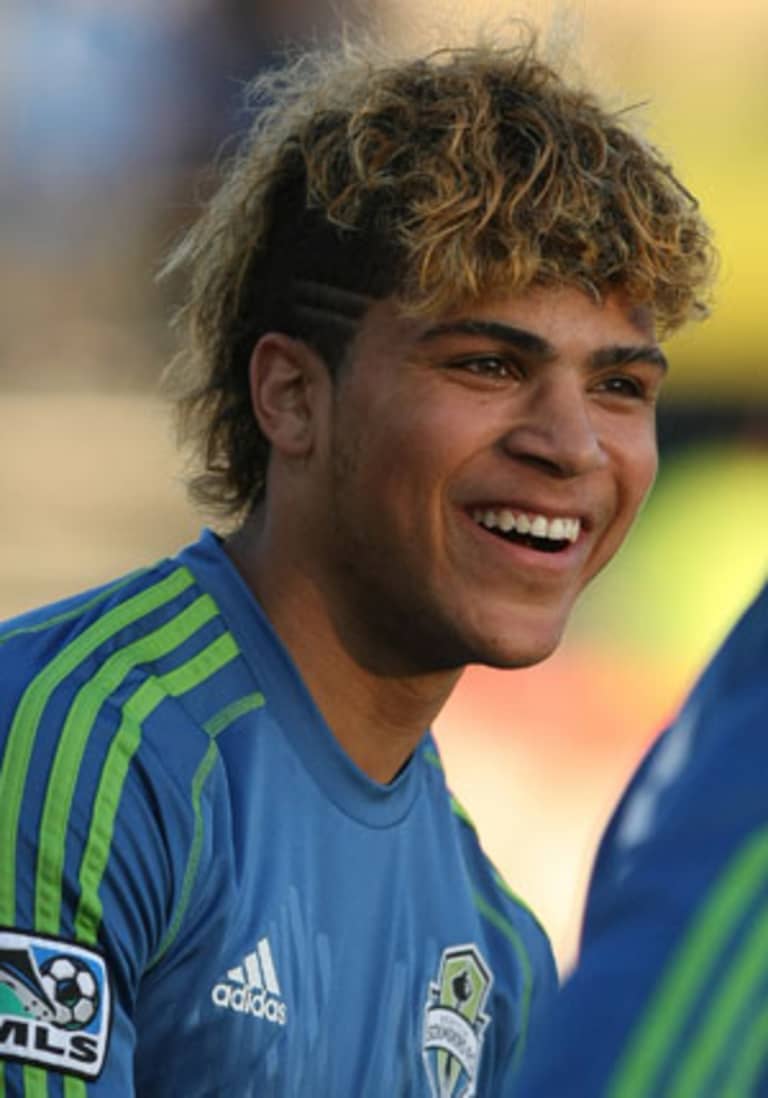
DeAndre Yedlin was a standout youth soccer player in Seattle by the time he was 11 years old, when he first caught the eye of future Sounders academy coach Sean Henderson. He signed with the Sounders academy at 17. (USA Today Sports)
Yedlin won a state championship with the Northwest Nationals club team the next year, but he was on the move shortly thereafter. His grandparents -- Ira Yedlin and Vicki Walton, who raised him since he was 19 months old -- quietly called Henderson and inquired about a potential switch to Crossfire, one of the Seattle area’s most respected and visible youth organizations.
Henderson’s reputation preceded him in youth soccer circles. He’d had his own success as a player – an All-American and national champion under Schmid at UCLA and then a pro in Germany and MLS – and it was no secret he was the brother of Chris Henderson, a US World Cup veteran and an MLS regular since the league's inception since 1996.
With years of experience breaking down opposing players and then a second career spent building young area players from the ground up, Sean Henderson knew Yedlin had something. He was the best player on an otherwise average team the year before, raw and completely relentless.
“He was really brave in tackles, sometimes to the point you were concerned about risking a red card,” says Chris Henderson, who saw Yedlin not long after the switch to Crossfire. “But he loved to play, and you could see it in training. He was going full out, up and down the flanks. He’s controlled his emotions and his energy as he’s gotten older, but those instincts are still there.”
All that matters only so much to Schmid, who says there’s even more criteria for judging players at such a young age. He looks not only at the player’s instincts – is he making the right decision when to push forward, or when to take on a defender one-on-one – but also his engagement on the field. A player lagging behind the ball or more interested in his girlfriend or parents on the sideline, Schmid says, is worth noting.
“Even at that age, you want kids who are engaged,” Schmid says. “If a guy loses the ball, the first thing he should be thinking is, ‘how do I get it back?’ That’s not always easy to find.”
By all accounts, Yedlin fit the bill. After a successful spell with Crossfire he joined Sean Henderson by making the move to the Sounders academy in 2010. He was a junior in high school, four years away from the World Cup.
-
-
Sometime during that year a debate began about the best way Yedlin could actually forge a professional career. It was clear to those in his circle – most notably the Henderson brothers, who were now both on board with the Sounders – that despite Yedlin’s abilities, his future as an attacking midfielder was murky.
The competition for playing time is inherently stiff in central midfield and it was clear that for all his attributes, Yedlin wouldn’t be a traditional playmaker at the professional level. He needed a spot on the field that could highlight his speed, stamina and athleticism and make him indispensable to an MLS roster.
“At the highest level, we knew he had to play right back,” says Sean Henderson. “It was pretty simple. For a young player, that’s the quickest way to get in.”

Yedlin was used primarily as an attacking midfielder until his senior year in high school, when his coaches hatched the idea to turn him into a right back. Says Sounders Academy coach Sean Henderson: “It was pretty simple. For a young player, that’s the quickest way to get in.” (USA Today Sports)
Luckily for Yedlin, there was plenty of precedent. Brazilian legend Cafu was the best of the breed going back to the 1990s, and France won a World Cup in 1998 with Bixente Lizarazu in a revelatory role at left back.
Brazilian left back Roberto Carlos also emerged as a world-class defender with speed for Real Madrid years before Yedlin made the switch, and Barcelona outside backs Dani Alves and Eric Abidal were critical to the team’s run of success between 2008-12 under head coach Pep Guardiola.
Teams set on controlling the tempo of the game with possession in the midfield needed numbers centrally, meaning traditional wingers pinched inside. The space they left behind was to be filled by overlapping defenders not only with speed to get forward and recover but also the ability to provide an accurate cross.
If Yedlin could use his speed to stretch the field and fill in those gaps, he could become something of a rarity in MLS, and perhaps one day find a role with the United States national team.
By then he’d also caught the eye of Akron head coach Caleb Porter, who had served as an assistant with the US Under-18 team when Yedlin was called in as a junior in high school. The Zips won a national title in 2010 using an aggressive and effective right back in Kofi Sarkodie, but there was a hole in the lineup after Sarkodie departed for MLS, drafted by the Houston Dynamo in 2011.
Yedlin made the switch to right back during his senior year at O’Dea High School in Seattle and thrived immediately. But even as a promising member of the Sounders academy there was little debate about the club offering him a Homegrown contract with the senior team, largely because there was still plenty of work to do.
“Because of his speed when he was younger, he had a tendency to just go,” Sean Henderson says. “The tactical side of the game was missing – when to run, how far to run. When he started playing games at the higher levels it began sorting itself out, but he was still learning the right time to go forward.”
A group of top-level Sounders personnel including part owner Adrian Hanauer, Sounders academy head coach Dick McCormick, Schmid and the Henderson brothers gathered to discuss Yedlin’s options, and it was clear college was the next step. As a former college coach, Schmid advocated for the decision to have Yedlin play at least a year at school before the club would reassess his development, and Yedlin had an offer from Porter and Akron on the table.
There was also great concern among the Sounders that signing Yedlin too soon could potentially harm his development and ruin the club’s first shot at naming a Homegrown player. The club was all-too-familiar with local hero Nik Besagno – the King County teenager who was drafted first overall in the 2005 MLS SuperDraft and ended up out of MLS by 2008 – and by 2010 there were already cautionary tales of young players called up too quickly under the MLS Homegrown initiative. Those moves had cost some players their college eligibility, and tarnished the reputations of some academy programs.
The Sounders played it safe, and Yedlin went to Akron. Sounders assistant Kurt Schmid watched him play a number of times his freshman year and Yedlin returned to Seattle the summer after his freshman year a more confident player. The faults that hurt him during his younger years – a sometimes clumsy first touch and errant crossing – had improved, and he was beginning to truly grasp when to best use his speed in attack so that his team wouldn’t get caught on the counterattack.
Yedlin returned to Akron his sophomore year and excelled again for the Zips, leaving no doubt about his professional future. The Sounders made him the franchise’s first-ever Homegrown player in January 2013 and unveiled him at the MLS SuperDraft in Indianapolis four days later.
“Expect some speed,” he told the Sounders’ website. “And lots of attack.”
-
-
The rest of Yedlin’s rocket ride is well documented. He won a starting spot for the Sounders during his rookie season in 2013 and, at the suggestion of the Sounders staff, earned a spot on the US team at the Under-20 World Cup last summer.
Less than a year later he earned his first cap with the US senior team, and he was selected to Jurgen Klinsmann’s 23-man roster ahead of the World Cup in May.
He appeared in three games at the World Cup in Brazil and was sold to English Premier League side Tottenham less than a month later. At this time next year, he’ll be in Europe.
But there is still plenty of room to grow for Yedlin, despite all the steps he’s taken to get here. It’s easy to salivate over his speed and tenacity, but there are moments when it’s easily apparent he’s still just 21 years old, far from a finished product in MLS, let alone in the EPL.
Look no further than the recent highlight that drew him national attention during last week’s US Open Cup final in Philadelphia. The play is remembered for his ability to somehow chase down a Union player on a breakaway from beyond midfield, but it’s Yedlin’s brutal first touch that sets off the play in the first place.
Or take the Sounders’ 4-4 draw against the Portland Timbers back in April, when former Akron star and Timbers midfielder Darlington Nagbe carved Yedlin up on the right side most of the afternoon. The Sounders only salvaged the draw after Yedlin cleared a Timbers scoring chance off the goal line and then drew a penalty kick in the waning minutes because he overlapped on the right side and burst past the Timbers defense.
“He’s not perfect,” Sean Henderson says. “But he’s done a great job at making all these jumps and proving himself. That’s where he has separated himself. That mentality: to improve his game, and to prove his game.”
Both Schmid and Chris Henderson know that Yedlin’s rise to success is not the perfect model for every player, and there’s no direct line from the Seattle suburbs to White Hart Lane. They each attribute Yedlin’s success a mixed bag of factors, not wholly the result of what the Sounders or Yedlin did right in his development.
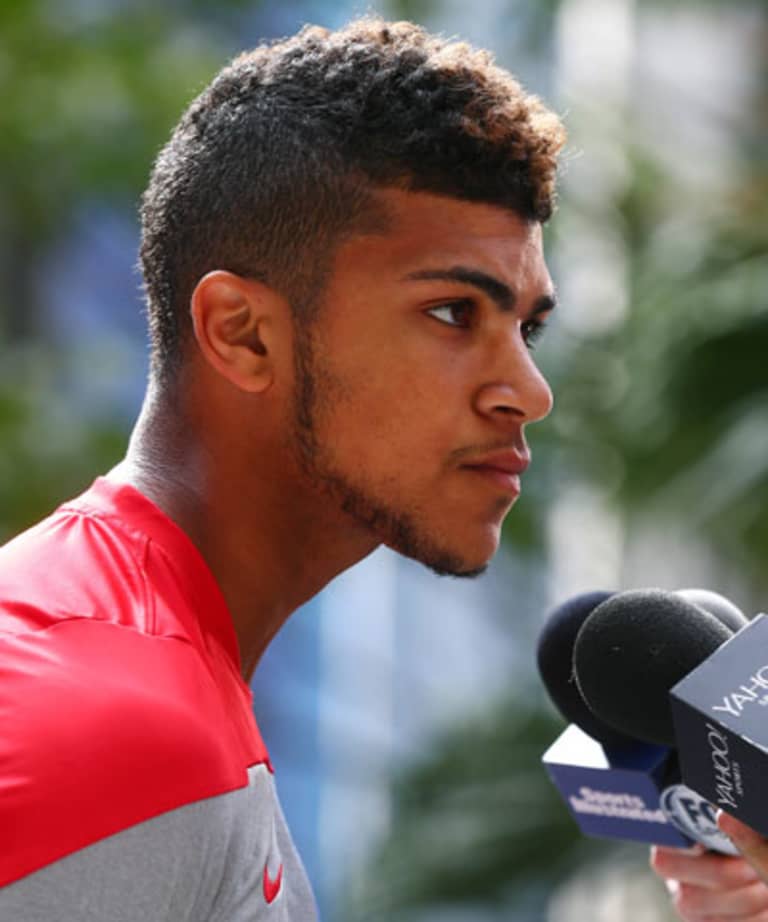
Yedlin appeared in three World Cup games with the United States this summer in Brazil, becoming the first MLS Homegrown player to appear in the World Cup. Says Sounders head coach Sigi Schmid: “It’s not about the pressure of finding another DeAndre. Sometimes it hits and sometimes it doesn’t." (USA Today Sports)
The move to right back meant less competition. A nagging hamstring injury to Sounders defender Adam Johansson in 2012 made him expendable ahead of Yedlin’s rookie season. And what if US starting right back Fabian Johnson hadn’t gotten injured during the Americans’ match against Belgium in the Round of 16, forcing Yedlin off the bench? Would Tottenham still be interested?
“It wasn’t that I thought he would struggle when he got his opportunity,” Schmid says. “I just didn’t think it would happen this soon.”
And so they will. The Sounders signed two more Homegrown players in January – midfielder Aaron Kovar and forward Sean Okoli – and they have one of the country’s premier young talents in Jordan Morris, the Stanford University standout who earlier this month earned a call from Jurgen Klinsmann for the United States’ international friendly against the Czech Republic.
There are also the rewards of the Yedlin deal – a reported $4.5 million transfer fee, of which the Sounders receive 75 percent – that the club can throw back into their academy system. And there’s a new motto quietly circulating around the Sounders academy staff, a call to action for both coaches and players: Who’s going to be the next DeAndre Yedlin?
“It’s not about the pressure of finding another DeAndre,” Schmid says. “It’s about doing what’s right for the player. Sometimes it hits and sometimes it doesn’t. But as a motivator for the staff here and the players, DeAndre’s story has been wonderful. The players realize that all of this is possible.”

